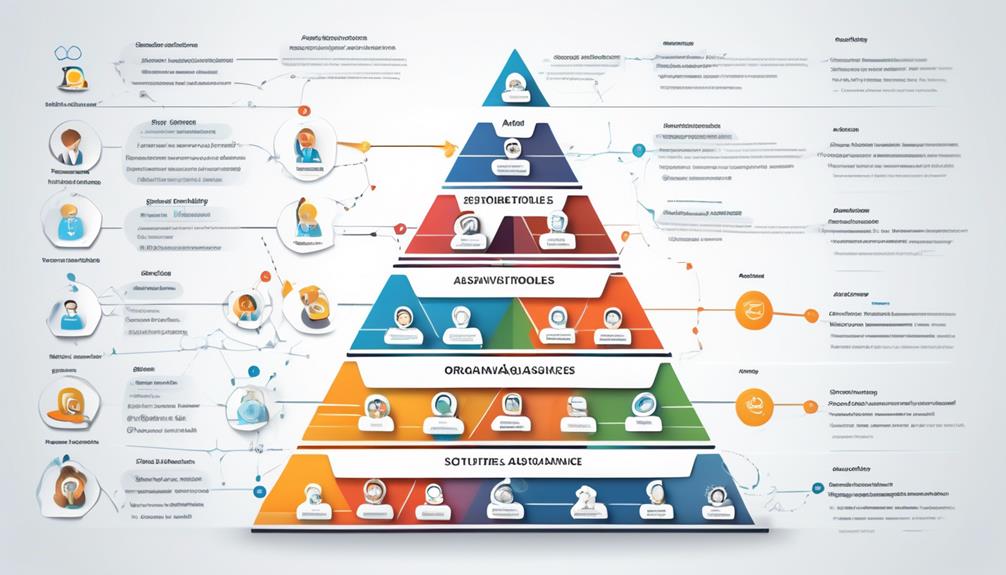Implementing continuous feedback loops is your secret productivity hack as a QA professional. By actively collecting and analyzing real-time input, you can quickly identify issues, streamline testing processes, and improve product quality. Automation tools make gathering and sharing feedback effortless, while collaboration fosters open communication and collective problem-solving. This cycle keeps you agile and responsive, driving continuous improvement. Keep exploring, and you’ll discover how to maximize these strategies to elevate your QA effectiveness even further.
Key Takeaways
- Continuous feedback loops enable QA teams to identify issues early, reducing defect rates and improving product quality efficiently.
- Automating feedback collection and analysis accelerates defect detection and streamlines QA workflows.
- Collaborative communication fosters transparency, ensuring quick resolution and shared understanding of quality standards.
- Integrating automation and collaboration creates an agile environment that adapts quickly to project changes.
- Regular, real-time feedback enhances team engagement and drives continuous improvement in QA processes.

Continuous feedback loops are essential for fostering ongoing improvement in any organization or project. When you implement them effectively, you access powerful opportunities to enhance productivity, streamline processes, and boost team cohesion. One of the key advantages of continuous feedback is how it leverages automation efficiencies. By integrating automated tools, you can gather, analyze, and distribute feedback in real time, reducing manual effort and eliminating delays. Automated surveys, performance dashboards, and instant notifications ensure that everyone stays informed and can act swiftly on insights. This seamless flow of information means you don’t have to wait for periodic reviews or lengthy reports; instead, you continuously refine your workflows based on fresh, relevant data. Incorporating performance metrics helps you track progress and identify areas for improvement more effectively.
Automated feedback tools enable real-time insights, reducing delays and enhancing continuous improvement in workflows.
But automation alone isn’t enough. Collaboration strategies play a crucial role in making feedback loops truly effective. When you foster a culture where team members feel comfortable sharing honest, constructive feedback, you create an environment of transparency and continuous learning. Collaboration tools like shared documents, instant messaging, and project management platforms make it easier for everyone to participate in feedback exchanges. As you encourage open communication, you’ll notice ideas and concerns surface quickly, allowing your team to adapt and improve without bottlenecks. These strategies also help break down silos, ensuring feedback isn’t just top-down but a two-way street that empowers all team members to contribute.
Your ability to combine automation efficiencies with strong collaboration strategies means you can sustain an agile approach to work. Automated feedback collection reduces manual overhead, freeing up time for deeper analysis and creative problem-solving. Meanwhile, collaboration strategies ensure that feedback isn’t just collected but acted upon collectively. You can set up regular check-ins, instant polls, or continuous review cycles, making feedback a natural part of daily operations. This continuous flow helps identify issues early, celebrate quick wins, and adapt processes before small problems snowball into bigger setbacks.
In practice, you’ll find that these feedback loops enable you to respond faster to changing conditions, customer needs, or project requirements. You’ll also develop a more engaged team, as everyone feels their input matters and can see tangible improvements. Over time, this creates a cycle of ongoing enhancement, where automation efficiencies and collaboration strategies work hand in hand to boost productivity and quality. By making feedback a continuous, integrated part of your workflow, you turn improvement from a sporadic effort into a core organizational habit. That’s the true secret behind the productivity gains that continuous feedback loops can open for you and your team.
Frequently Asked Questions
How Do Feedback Loops Impact Long-Term QA Team Morale?
Feedback loops substantially impact your QA team’s morale by boosting team motivation and fostering open communication strategies. When you provide timely, constructive feedback, your team feels valued and understands how their work contributes to overall success. This ongoing dialogue encourages continuous improvement and trust, reducing frustration and burnout. As a result, your team stays engaged, motivated, and more committed to delivering quality, creating a positive work environment that sustains long-term morale.
What Tools Best Facilitate Continuous Feedback in QA Processes?
They say, “Communication is key,” and that’s especially true for QA processes. You should prioritize tools that facilitate automation integration and stakeholder communication, such as Jira, TestRail, or Slack. These tools enable real-time feedback, streamline collaboration, and guarantee everyone stays aligned. By choosing the right tools, you create a seamless feedback loop that boosts productivity, improves quality, and keeps your team motivated and engaged over the long haul.
How Can Small Teams Implement Effective Feedback Loops?
You can implement effective feedback loops by fostering iterative testing and encouraging stakeholder engagement. Regularly review testing results, ask for input, and adapt quickly. Keep communication open, so team members and stakeholders stay aligned on issues and improvements. Use tools that support real-time updates, and make feedback a continuous part of your workflow. This approach helps identify problems early, boosts productivity, and guarantees your team stays agile and focused on quality.
What Are Common Challenges When Establishing Feedback Cycles?
When establishing feedback cycles, you often face challenges like communication barriers, which can hinder clear, timely exchanges. Feedback fatigue also emerges when team members feel overwhelmed by constant input, reducing their engagement. To overcome these issues, you should foster open communication, set clear expectations, and guarantee feedback is constructive and manageable. This approach helps maintain motivation, encourages continuous improvement, and keeps your team aligned and productive.
How Do Feedback Loops Influence Overall Product Quality?
They say “a chain is only as strong as its weakest link,” and feedback loops make your product stronger. When you use automated testing and analyze user surveys, you catch issues early and adapt quickly. This constant cycle of feedback guarantees continuous improvement, boosting overall quality. By listening to user insights and automating tests, you create a more reliable product that meets user needs and reduces errors.
Conclusion
Remember, feedback is the breakfast of champions. By embracing continuous feedback loops, you keep improving, catching issues early, and boosting your productivity. Don’t wait for perfection; progress happens through constant refinement. If you stay open to learning and adapt quickly, you’ll stay ahead of the game. Implement these loops in your QA process, and watch your efficiency soar. After all, success favors the proactive—so keep the feedback flowing and keep growing.









